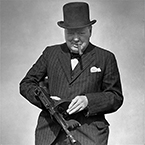JacquesDeLalaing
Posts: 88
Joined: 10/7/2016
Status: offline

|
So, in more intuitive terms, the Panther tank element from the screenshot would have the following stats:
Ranged Combat: 245 (vs. hard) / 53 (vs. soft) // MODIFIED BY "RANGE"
Close Combat - Attack: 245 (vs. hard) / 53 (vs. soft)
Close Combat - Defend: 184 (vs. hard) / 39 (vs. soft)
Protection against direct fire units (both in ranged and close combat): 281
Protection against indirect fire units (both in ranged and close combat): 165
And for the infantry element:
Ranged Combat: none (no range)
Close Combat - Attack: 5 (vs. hard) / 10 (vs. soft)
Close Combat - Defend: 7 (vs. hard) / 15 (vs. soft)
Protection against direct fire units: 112
Protection against indirect fire units: 112
-------------------------------------------------
In close combat, both sides try to hit each other, with the attackers using their "Close Combat - Attack" stats against the defenders' "Protection". The defenders counter-attack with their "Close Combat - Defend" stats against the attackers' "Protection" stat.
In ranged combat, the unit initiating the fire combat usees its "Ranged Combat" stat (modified by range) against the target's "Protection" stat. From combat round 2 on, the unit under fire might return fire (if it has any weapons with sufficient range), using its "Ranged Combat" stat (modified by range) against the aggressors' "Protection" stat.
----------------------------------------------
That being said, there are a lot of situational modifiers that come into play as well - XP, HQs, terrain modifiers (basic cover modifiers and "automatic entrenchment"), elevation differences, prepared defences ("entrenchment"), LOS quality, start-up penalties for the attacker in assaults, combat type (probe/recon in force), uncertainty/randomness rolls, river crossing penalties, supply and fuel issues, etc.
< Message edited by JacquesDeLalaing -- 1/30/2022 5:32:10 PM >
|
 Printable Version
Printable Version









 New Messages
New Messages No New Messages
No New Messages Hot Topic w/ New Messages
Hot Topic w/ New Messages Hot Topic w/o New Messages
Hot Topic w/o New Messages Locked w/ New Messages
Locked w/ New Messages Locked w/o New Messages
Locked w/o New Messages Post New Thread
Post New Thread